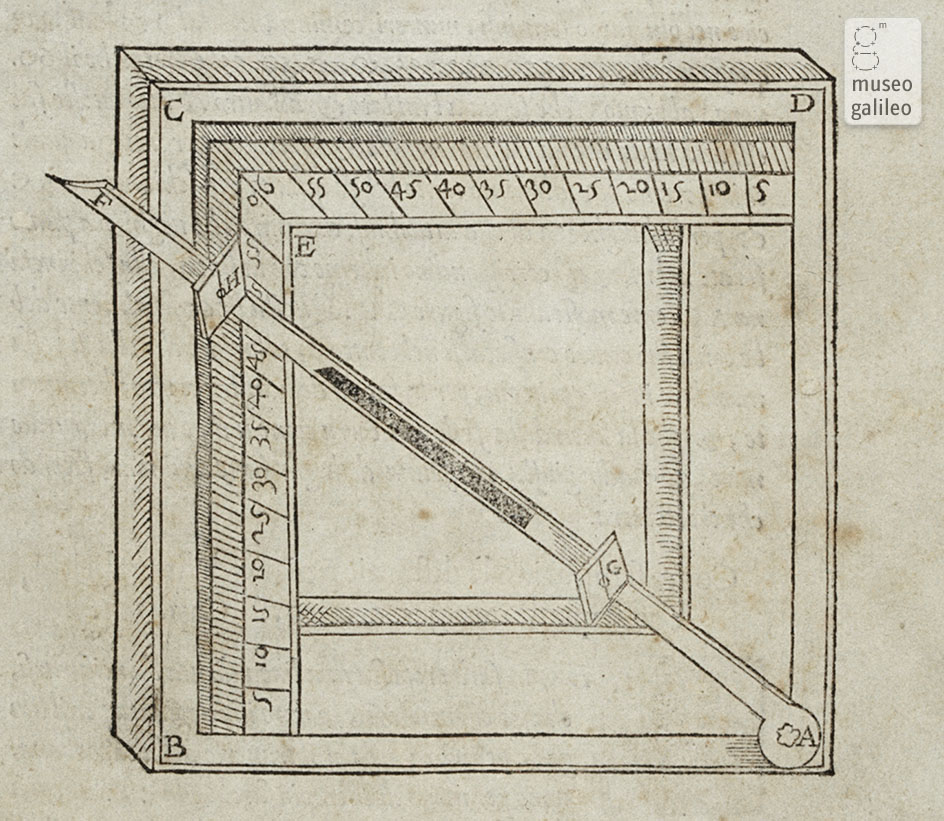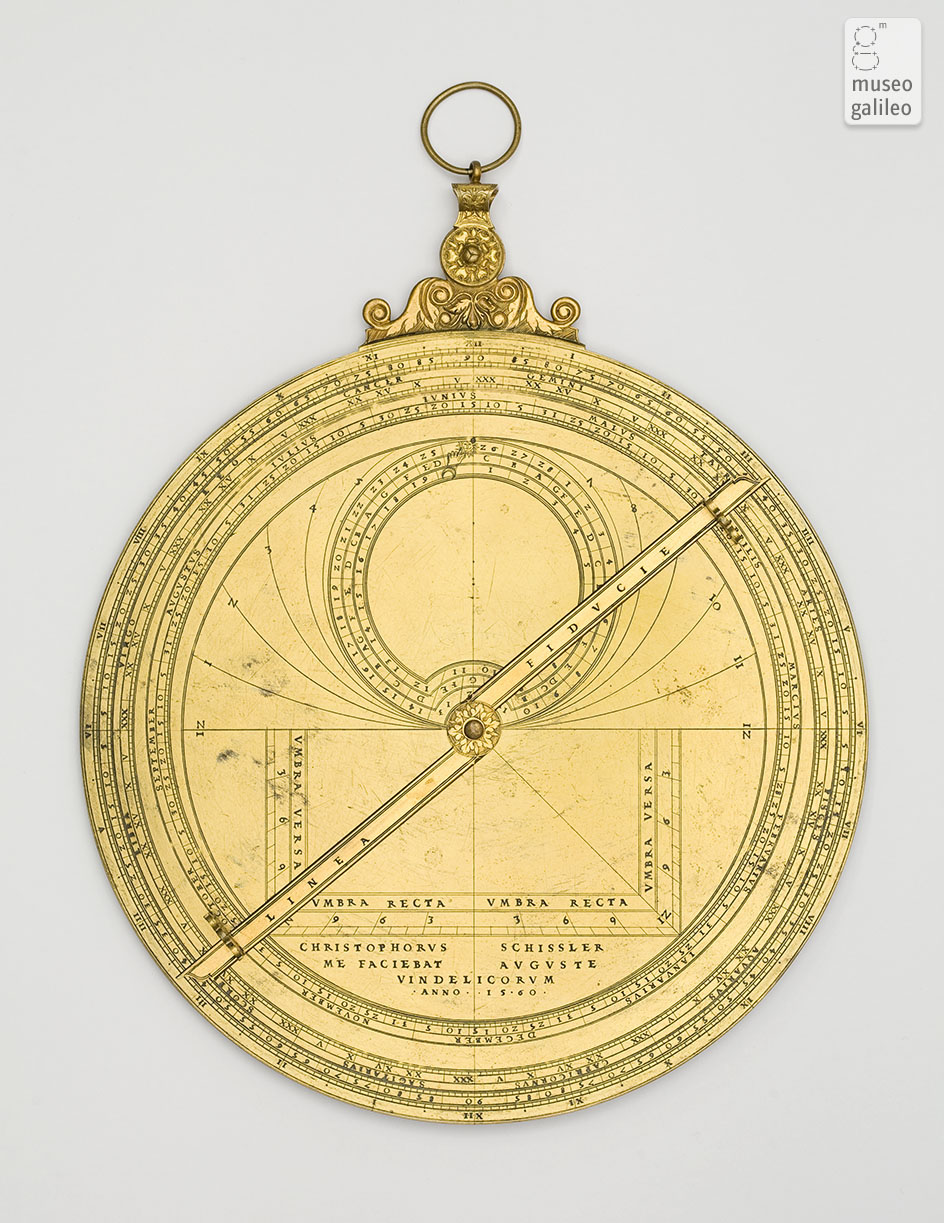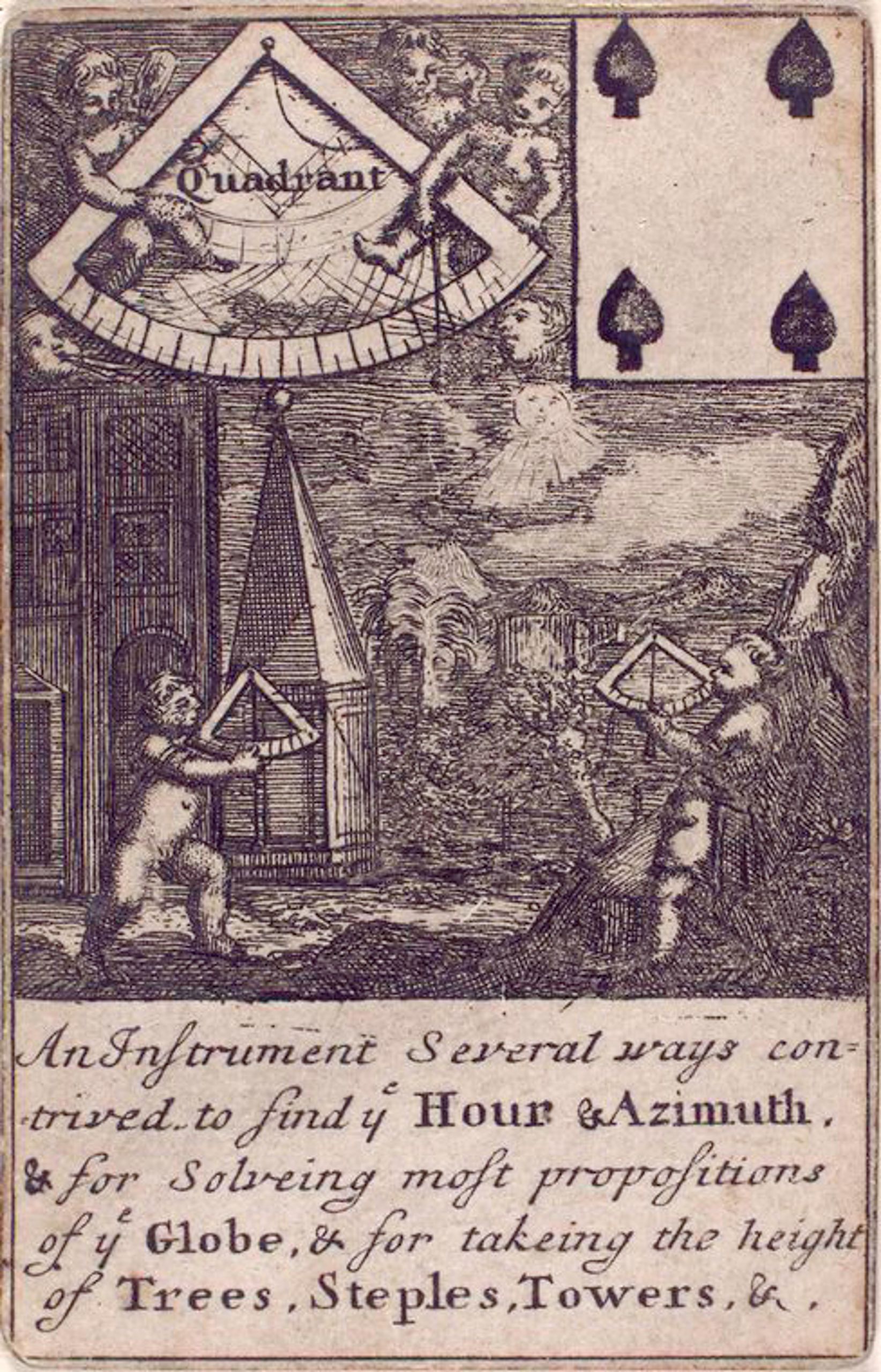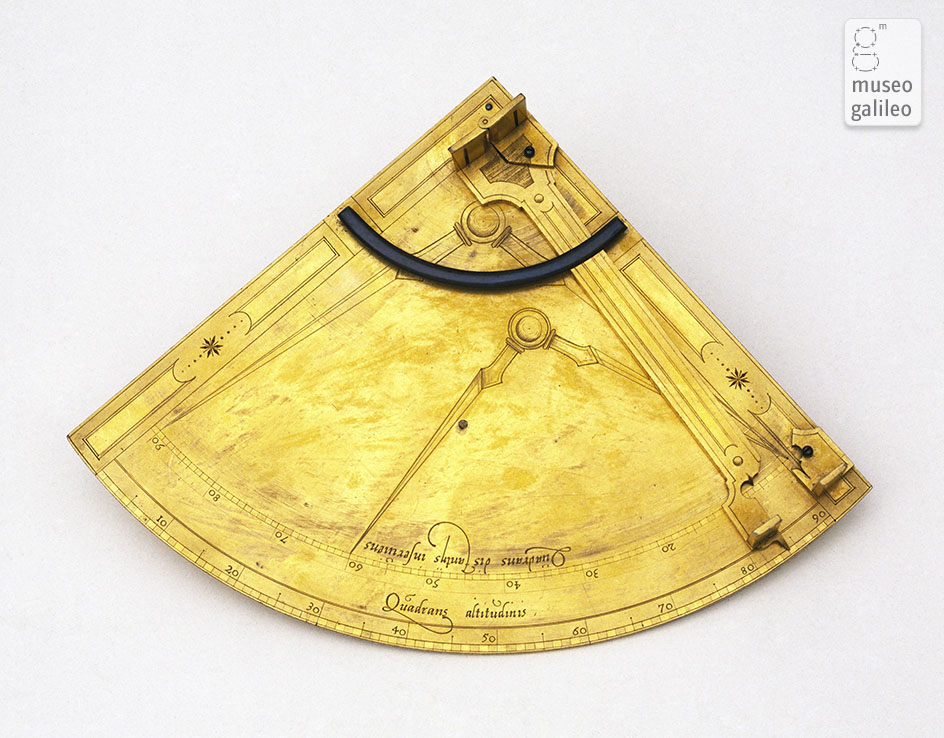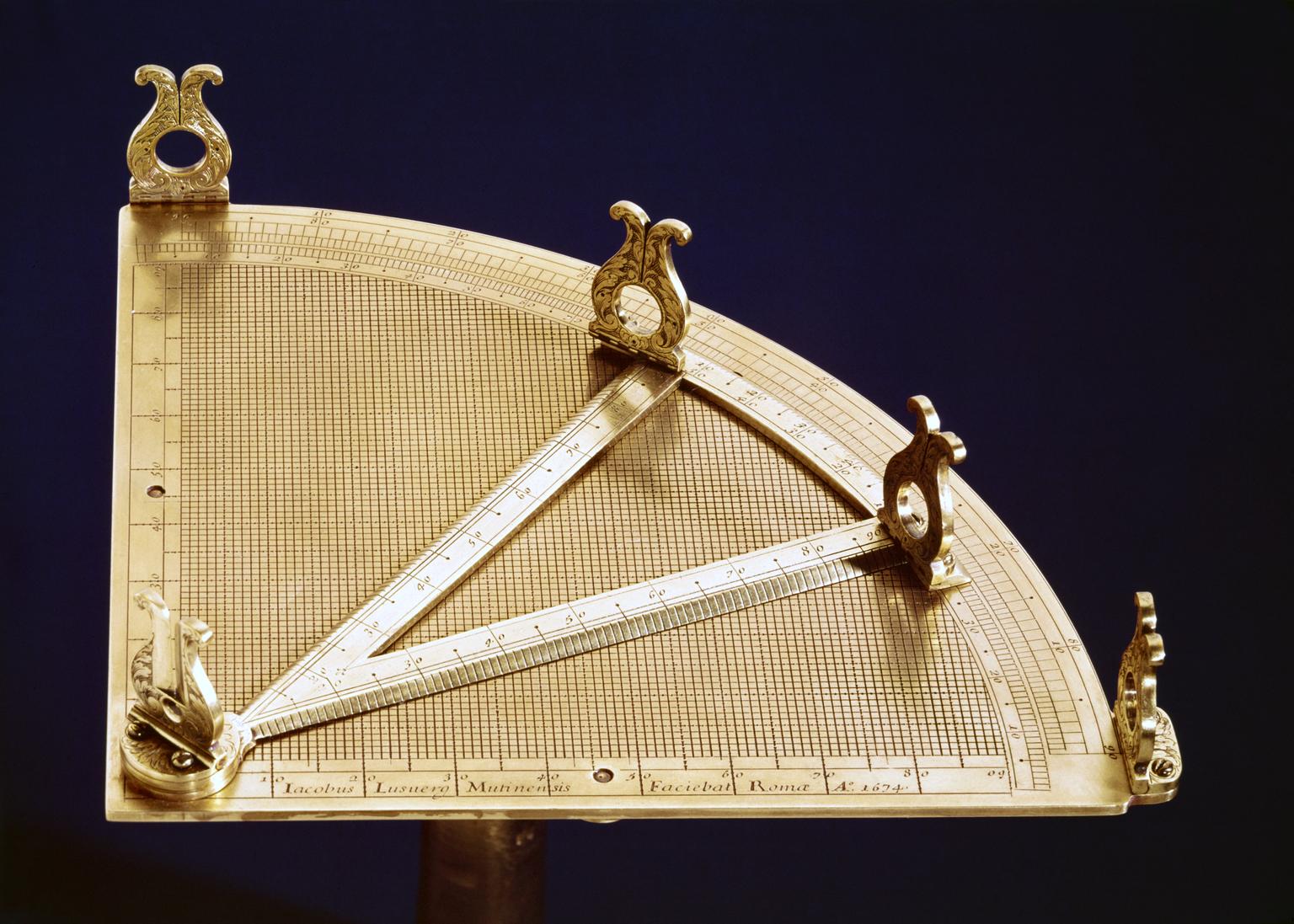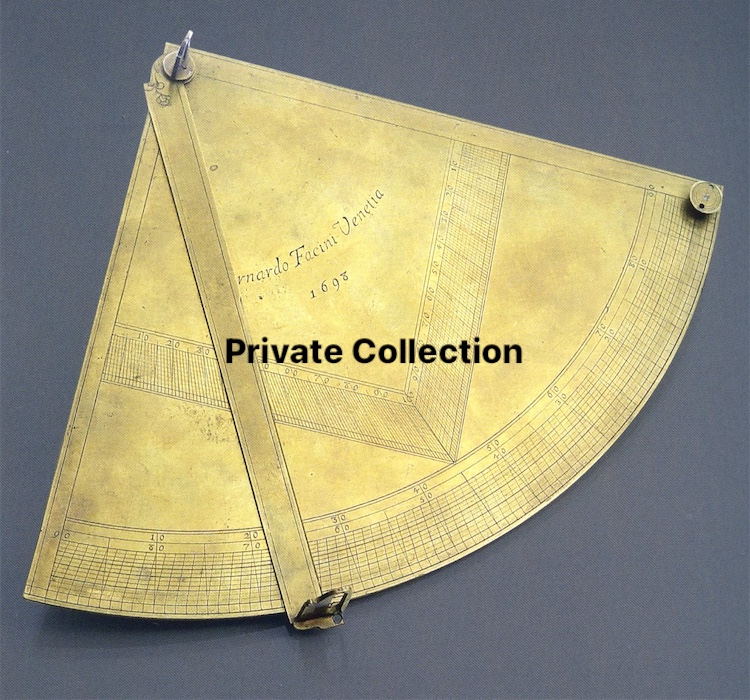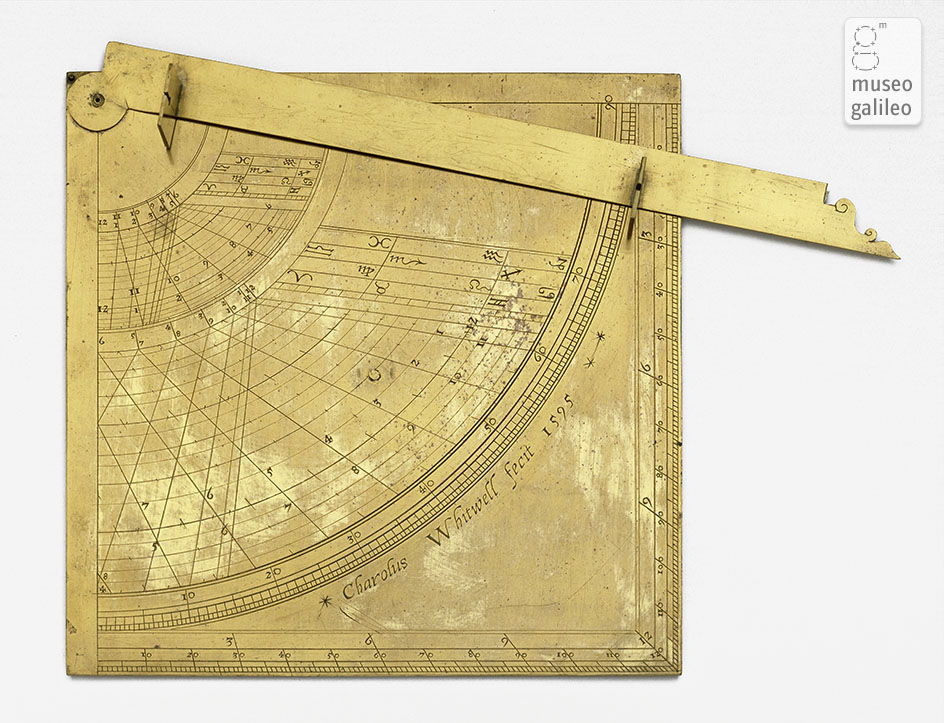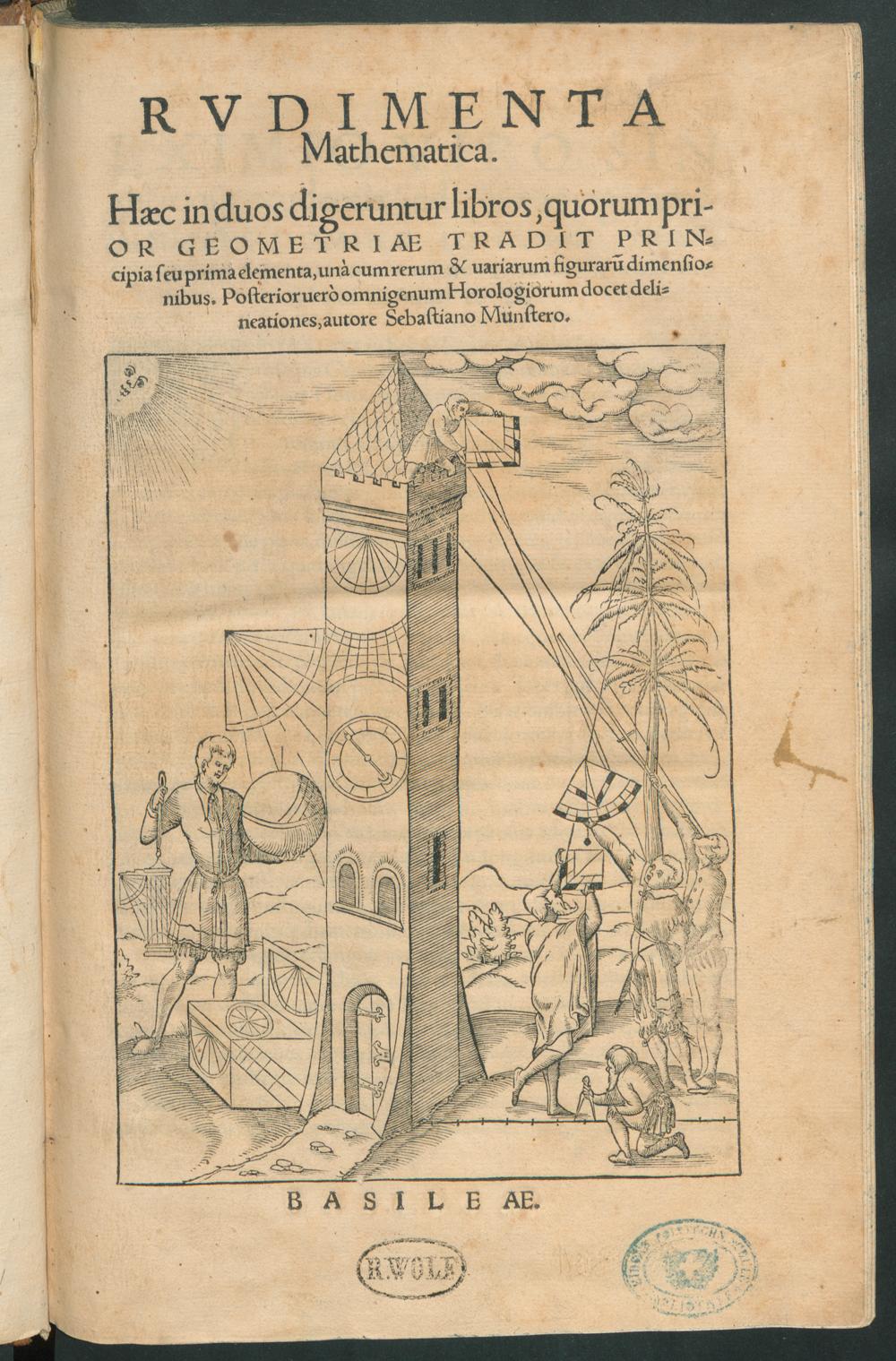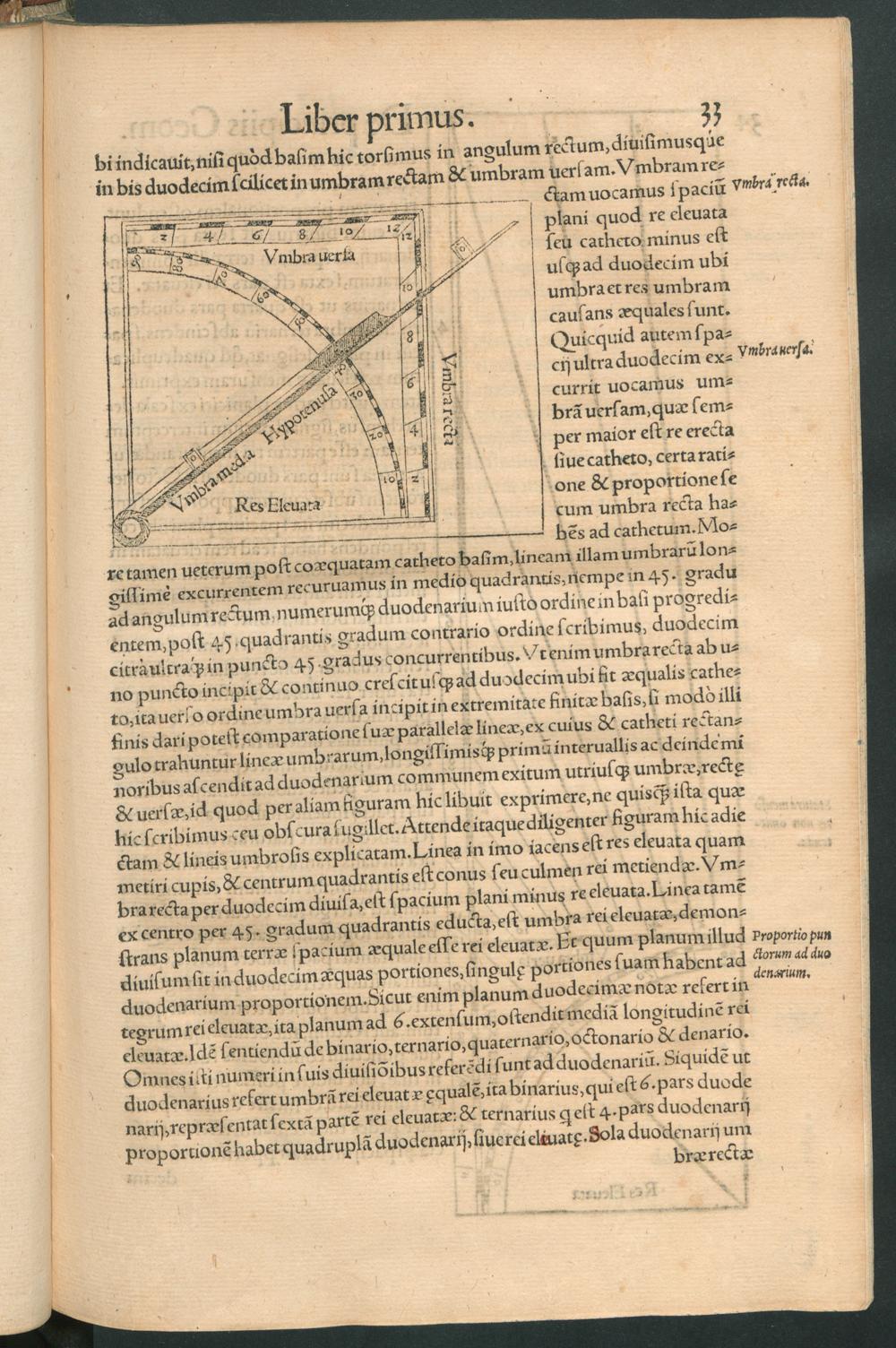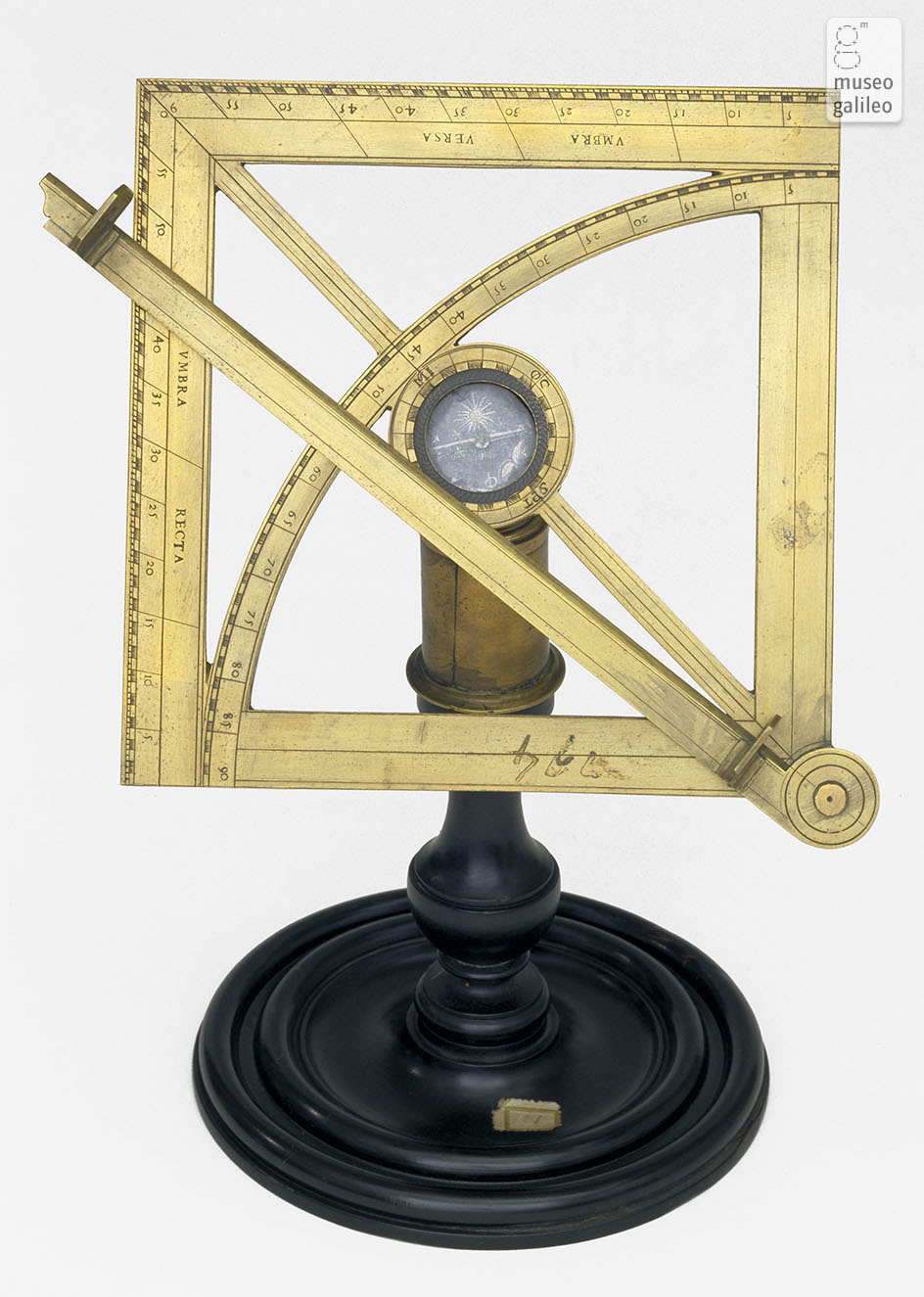
16th Century Geometric Square - With Outer Shadow Box & Inner Quadrant
Shadow Box - Quadrant - Geometric Square
From roughly 1500 to 1650 Surveyors measured heights (in ballpark terms) with instruments containing a Shadow Box. Shadow Boxes were almost always found on Astrolabes and early (First Generation) Theodolites.
Shadow Boxes also sometimes appeared inside a Quadrant - an instrument that had a quarter ring divided into 90 degrees. Most of these quadrants relate to astronomy or horology, however, and not surveying.
And some makers put a quadrant inside of of a Shadow Box (see the pic at the top of this webpage), with the instrument generally called a Geometric Square.
Shadow Box
The shadow box or square, also called altitude scale, which was generally placed on the back of astrolabes and quadrants, is the basic element of the so-called geometrical square. The instrument serves to measure heights and distances by simulating the ratio between a gnomon and its shadow. The umbra recta simulates the shadow cast on the horizontal plane by a vertical gnomon when the Sun's ray is inclined between 0° and 45°. The umbra versa simulates the shadow cast on the vertical plane by a horizontal gnomon when the Sun's ray is inclined between 45° and 90°. To each value of the umbra recta corresponds a value of the umbra versa. When the ray is inclined by 45°, the two shadows are equal (umbra media).
Click here for directions on how to use the Shadow Square to calculate heights/distances.
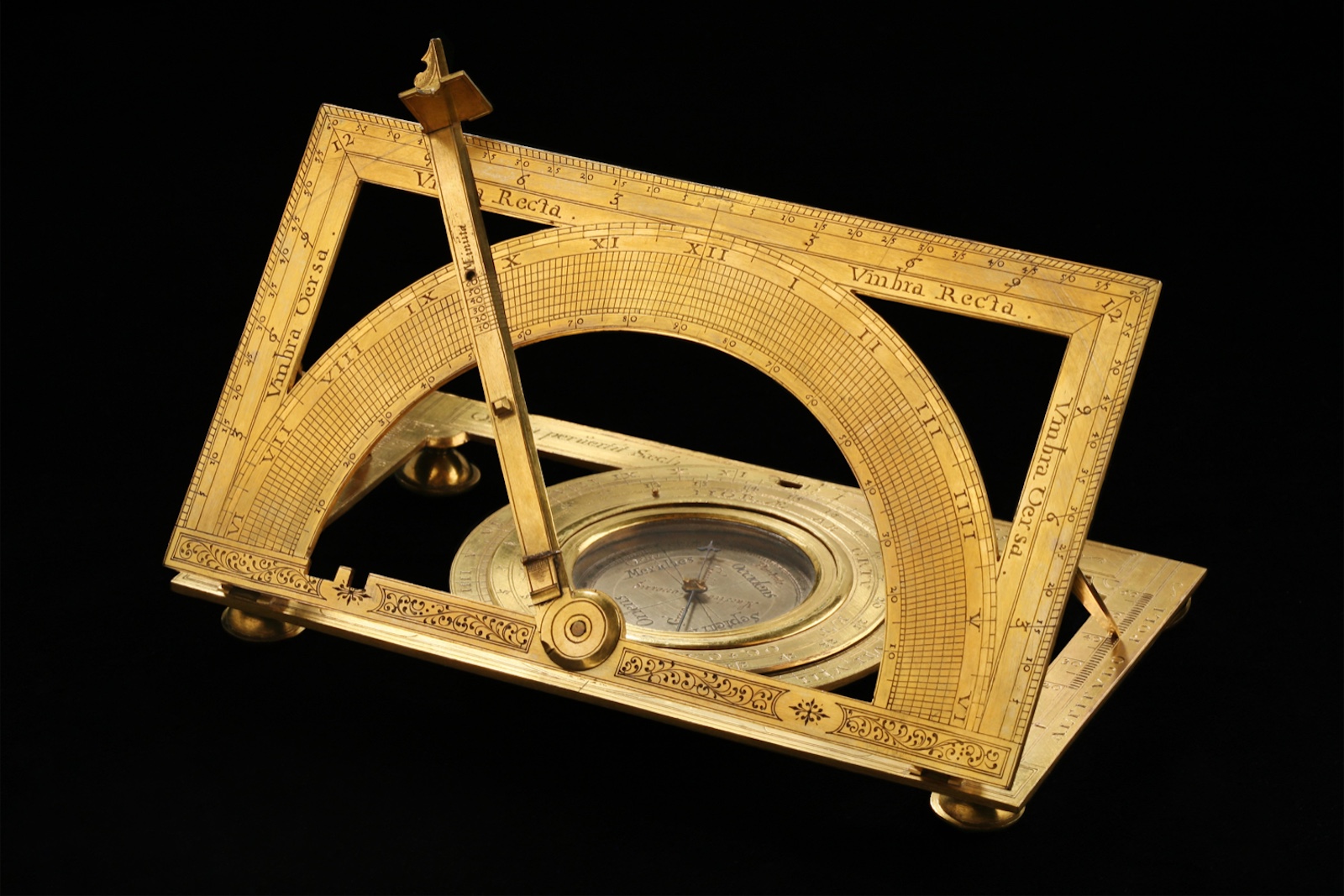
Beautiful Instrument Made by Habermel
Quadrants
Quadrants are 1/4 of a full 360 degree circle, or 90 degrees. For the most part quadrants were used in aviation and Astronomy. Quadrants did not have a large marketshare when it came to surveying instruments.
The Quadrants that were designed as a Surveyor's tool usually have two to four meaningful sight vanes and a mounting socket. While Quadrants were sued as surveying instruments early on, I believe that a limited amount of Quadrants were made in Colonial America.
Shadow Boxes and Quadrants often appeared together in early instruments. The Shadow Box could either be outside or inside the 90 degree divided ring. If the Shadow Box was outside the 90 degree divided ring, the instrument was sometimes called a Geometrical Square. If the Shadow Box was inside the 90 degree divided ring, the instrument was sometimes called a Geometrical Quadrant.
In 16th and early 17th century textbooks, you frequently see illustrations showing a surveyor measuring the height of a tower with a Quadrant or Geometrical Square/Quadrant. I suspect not many surveyors earned a living by measuring the heights of towers, however.
Geometric Square
Geometric Squares are Shadow Boxes on the outside with an interior divided 90 degree ring Quadrant on the inside. These instruments apparently had a bit of market share in the late 16th century and early 17th century. A Geometric Square could measure angles both horizontally (with the Quadrant) and vertically (with the Shadow Box). But they were quickly put on the sideline by the more useful and substantial First and Second Generation Theodolites.
Collectability
Geometric Squares are neat instruments, but don't come up for sale often. They didn't have much marketshare. But they are among the earliest surveying instruments made, and you would be lucky to acquire one.
Important Books - Geometric Squares
Below are some of the important books related to the Geometric Square.
The 1982 Whipple Catalogue "The Compleat Surveyor" has a short write-up on Geometric Squares - see below.
Munsters 1551 book Rudimenta Mathematica is in Latin, but the box contains a nice illustration of a Geometric Square.
Whipple on the Geometric Square


My Reference Materials
Here are the main reference books I used while researching my Ancient Surveying Webpages:
5-Volume Catalogue Of The Most Important Worldwide Private Collection Of Scientific Instruments (With 928 Color Illustrations). Written in German, but an amazing reference tool. The pictures are incredible - most of the instruments are not found on the internet. Crazy Expensive.
Bennett's Catalogue of Surveying and Related Instruments (2022). Fantastic pics and info about the surveying related instruments at the Galileo Museum (which has an INCREDIBLE collection of early instruments).
Bennett's The Divided Circle (1987). A History of Astronomy, Navigation and Surveying Instruments.
Delalande Antiques Two Volume book series on Astrolabes. The two volumes walk you thru how to use and collect Astrolabes. A must have if you want to collect Astrolabes.
Kiely's Surveying Instruments - Their History (1947) Somewhat dated now, but still has a great deal of relevant information. Not the easiest read, however.
Daumas' Scientific Instruments of the 17th and 18th Centuries (Translated into English 1972).
Richeson's English Land Measuring to 1800 (1966). A nice book that is mis-paginated unfortunately. But still contains some good information about early English land surveying.
Important Websites where you can use the search function (e.g. "Theodolite") to find instruments:
The Museo Galileo Virtual Museum - A Stunning Collection of Early Surveying Instruments
The Science Museum Group (UK Based)
Harvard University Collection of Scientific Instruments
The Museum of History and Science, Oxford
© 2020 Russ Uzes/Contact Me
